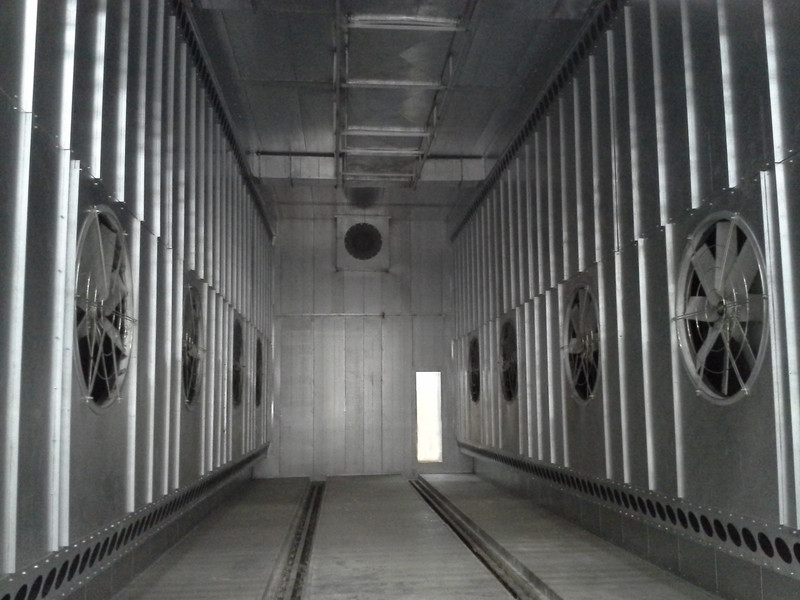If you're looking to cut energy costs, extend equipment life, and reduce your carbon footprint, increasing the efficiency of your industrial oven is a smart move. But not all upgrades are created equal. Here are the top 7 methods to improve oven performance—ranked from most to least impactful—based on energy savings, return on investment, and environmental benefit.
1. Seal Entry and Exit Points
Where your products enter and exit the oven are prime areas for heat leakage. Installing high-temperature curtains, powered air seals, or unheated vestibules helps trap heat inside the chamber and reduce the impact of room-temperature air infiltration.
Why it matters: These openings can be a hidden drain on oven performance. By sealing them, you retain more internal heat, cut heating demand, and improve temperature uniformity. The fix is relatively low-cost, and the efficiency benefits are immediate. Horizon pays unique attention to role of sealing when designing their custom ovens.
2. Adjust Exhaust Fans
Exhaust fans are necessary to remove moisture or vapors from the heating chamber but often run harder than necessary. A Variable Frequency Drive (VFD) can help regulate fan speed, letting you control airflow to match real-time needs, instead of always operating at maximum capacity.
Why it matters: Exhausting more air than needed causes heat loss, forcing the oven to work harder to maintain temperature. Reducing exhaust volume with proper controls can save thousands annually, while also maintaining product quality and process consistency.
3. Recover Heat from Exhaust Air
A tremendous amount of energy is lost through oven exhaust. Depending on your specific process, installing a heat recovery system or heat exchanger allows you to capture this hot air and redirect it back into the oven or elsewhere in your facility. This can dramatically reduce fuel or electrical input needed to maintain oven temperatures and may also qualify for rebates from your utility provider.
Why it matters: This is often the single most impactful efficiency upgrade. Exhaust air can account for up to 30% of an oven’s heat loss. By reclaiming 20–50% of that energy, heat recovery systems can slash operational costs and emissions. Cyclone Ovens™ are designed to minimize the volume of exhaust air to begin with, thus improving baseline efficiency.
4. Optimize Recirculation Fan Speed
Start with an industrial oven featuring Cyclone Technology™ whose fans typically require only 1/4 the energy of conventional ovens! Recirculation fans are key to distributing heat evenly within the oven, but they don’t always need to operate at full capacity. By adding a VFD, fan speed can be adjusted as the oven reaches temperature, helping maintain efficiency with lower energy use.
Why it matters: Fan motors consume a significant amount of electricity, especially in larger ovens. The best strategy is low energy Cyclone oven fans'. Adding VFDs can also reduce power consumption by 30–60%, depending on the application. Because fans run continuously, optimizing their performance leads to substantial long-term savings.
5. Upgrade Your Insulation
Good insulation keeps heat where it belongs—inside the oven. Adding or upgrading insulation can dramatically reduce surface temperatures, heat loss, and operating costs. If the oven feels hot to the touch on the outside, it's a sign that heat is escaping and energy is being wasted. Let Horizon experts evaluate and suggest an upgrade.
Why it matters: Though the savings accumulate more slowly over time compared to airflow controls, insulation upgrades offer long-term efficiency gains and safety improvements. Especially on older units, insulation improvements can pay off handsomely over the life of the equipment.
6. Use Energy Saver & Idle Modes
Energy saver mode reduces power usage during off-peak times while keeping the oven ready for rapid ramp-up when needed. Idle mode lowers the oven temperature during brief production pauses, like during breaks or equipment changes, conserving energy without disrupting workflow.
Why it matters: These smart controls are easy to implement and great for reducing peak demand charges and idle losses. Though not always in use depending on production schedules, they’re highly effective in operations with frequent starts, stops, or shifts.
7. Use Humidity Control
Humidity control systems monitor and adjust the exhaust rate based on the moisture content of the oven. This ensures that you’re using only as much energy as needed to dry the product, particularly useful when materials vary in moisture levels or when over-drying could damage output. Horizon ovens can be designed with humidity sensors and control systems to monitor real-time moisture content and adjust exhaust or recirculation accordingly.
Why it matters: While this upgrade can be highly effective, its impact is more specific to drying applications. When humidity levels vary, this system optimizes energy use. But in steady-state processes, the return may be limited.
Final Thoughts
While all seven strategies will contribute to cleaner, more efficient industrial oven use, focusing first on thermal sealing, exhaust heat recovery, and airflow optimization will deliver the biggest returns. These upgrades don’t just cut costs—they help your operation meet sustainability goals, reduce emissions, and stay competitive in an energy-conscious market. Contact your Horizon professional for more information.


